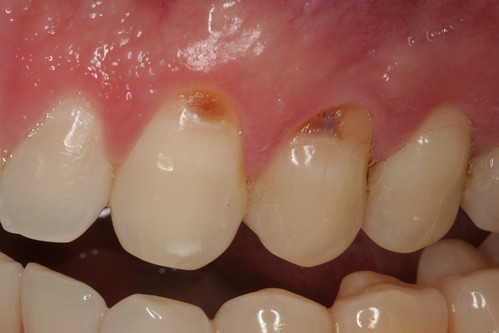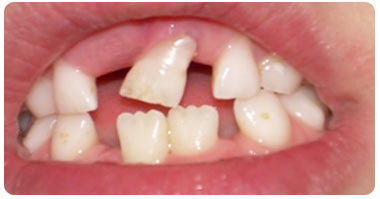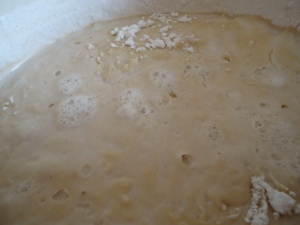The only personal water filtration system capable of up to 99.99% reduction in all four areas of contamination!
- Aesthetic
- Microbiological
- Chemical
- Dissolved Solids
How It Works
Through medical technology Seychelle created a uniform 2-micron absolute pore size for the assured reduction and removal of the above contaminants. The high-tech porous plastic micro-filter is impregnated with both the finest granulated activated coconut Carbon available and Seychelle's exclusive adsorbing media for superior analyte removal capability.In addition, the controlled 2-micron filter contains thousands of Omni-directional pores that result in a "tortuous path" for superior analyte reduction.
Seychelle's exclusive Ionic-Adsorption Micro-Filtration coordinates all processes of contaminant reduction by Adsorption, Absorption, chemical bonding, chelation, and depth filtration.
All Seychelle filters, from the smallest to the largest are extensively tested by only the highest quality, independent state approved laboratories certified to test under the strictest EPA/ANSI protocols and NSF Standards 42 and 53.
The Educated Alternative
"We are effectively and positively providing the solution to the public's concerns by taking water filtration to a whole new level of sophistication... via technological advancements and unsurpassed performance. The independent lab tests prove beyond a doubt that we have a product line to be trusted." - Carl Palmer, President and CEO
***********************************
 |
On Sale:$34.99
|
The Seychelle Water Bag is the perfect product when you need a continuous supply of water. It holds up to 2 gallons of water and makes great-tasting drinking water. The Water Bag comes complete with a handy carrying case with a strap, which you can hang from a tree, car door or simply hold conveniently in your hand. The bag produces up to 100 gallons of great-tasting water which is equal 757 half liters of bottled water!
**********************************
 |
| On Sale:$31.99 |
The 28oz Seychelle Water Filtration Bottle provides great-tasting, fresh water wherever you are. Ideally suited for situations where the drinking water source is questionable or not disinfected, it comes with an attractive insulator sleeve.
The 28oz Advanced Seychelle Water Filtration flip top bottle is the perfect solution for those traveling to foreign countries where safe drinking water is at a premium.
The insulator sleeve attaches to a belt or backpack, and is great for any outdoor use: walking, hiking, biking, travel, camping or emergency preparedness!
The bottle produces up to 100 gallons of great-tasting water; and is equal to 757 half liters of bottled water! For the 75% of the water consumed away from home, this is the perfect portable product!
Key Features:
- Now with BIOSAFE®, removes up to 99.99% of bacteria, virus, contaminants and pollutants found in drinking water sources using its proprietary Ionic Adsorption Micron Filtration System.
- Contains Iodinated Resin (EPA Reg. # 35917-2) and other proprietary media which effectively reduces virus and bacteria to six logs (99.9999%).
- Produces up to 100 gallons of filtered water or more depending upon the quality of the source water.
- Has a screw on/off fill from the top cap for easy filling.
- 28 oz size is compact, light weight and easy to use!
- Tested by Independent laboratories using EPA/ANSI protocols and NSF Standards 42 and 53.
- Environmentally safe! Does not pollute the countryside!
- Reusable - made of FDA approved low density polyethylene #4 plastic - Will not leach! BPA free!
- Filter is replaceable.
********************************
 |
| On Sale:$14.99 |
Compact, easy to use and truly versatile in its attractive carrying case, the Pure Water Straw is like a miniature bottled water plant.
It's ideal for traveling; in your purse, pocket, backpack, luggage, and car or for emergency preparedness. Every family should have several placed throughout the house; in backpacks, in car trunks or glove compartments!
The Pure Water Straw is a sure way of safeguarding the water you drink anywhere you go and best of all its 25-gallon capacity is equal to about 189 half liters of bottled water, providing great-tasting clean water at a fraction of the cost. Never leave home without it!
Key Features:
- Up to 25-gallon filter life.
- Now with BIOSAFE®, removes up to 99.99% of bacteria, virus, contaminants and pollutants found in drinking water including Guardia, Cryptosporidium, and E-Coli Bacteria.
- Proven effective against bacteria and virus to six logs reduction (99.9999%).
- Waterproof carrying case.
- Ideal for everyday use and disaster preparedness.
- Ultra light and compact.
- Non-toxic BPA free materials.
- Tested by Independent laboratories using EPA /ANSI protocols and NSF Standards 42 and 53.
- Costs less than bottled water.
*********************************
 |
| On Sale:29.99 |
The Pure Water Pump is ideal for pumping filtered water from any reservoir - 2 1/2 gallon to 5 gallon bottles, 20 to 50 gallon drums, a tub, storage tank, pond, pool, river, lake or virtually any type of container!
It's great for every day use; camping, travel or emergency use. It breaks down into two separate easy-to-carry components that fit into any backpack. The pumping system is powerful - delivering 60 PSI at point of contact.
Key Features:
- Provides up to 100 gallons of filtered water.
- Easy to use!
- Installs in seconds!
- Lightweight, durable, reliable! Now with BIOSAFE®, removes up to 99.99% of bacteria, virus, contaminants and pollutants.
- The pump uses the Advanced filter which is made of the same media as the Standard filter that features BIOSAFE® with the addition of EPA approved iodinated resin (EPA Reg #: 35917-2).
- Extensively tested by independent laboratories using EPA/ ANSI protocols and NSF Standards 42 and 53.
- Removes/reduces Organics and In-Organics such as DDT, PCBs, THMs, Lead, Copper, Mercury, Arsenic and Chromium 6, as well as pathogens such as Guardia, Cryptosporidium and E- Coli Bacteria.

***********************************
 |
| On Sale:$47.75 |
Streamlined and elegant looking, it fits easily into any refrigerator, and is ideal for R.V. use, camping, boating, and traveling.
Key Features:
- Now with BIOSAFE®, removes up to 99.99% of bacteria, contaminants and pollutants found in drinking water.
- Makes up to 150 gallons of water before changing filters.
- Flip top lid for easy filling.
- Makes water all day long.
- Easy to use, no slip pistol grip.
- Fits into any refrigerator.
- Plastic is non-leaching; BPA free!
- Filter pack easily changed every 6 months.
- Makes water all day long for multiple uses - drinking, cooking, plants, and pets.
- Reservoir holds one half gallon of water; filled twice - the pitcher comfortably holds one full gallon of water.
- Tested by Independent laboratories using EPA/ANSI protocols and NSF Standards 42 and 53.
***********************************
 The Advanced Seychelle Filtration Replacement Filter removes up to
99.9999% of viruses, contaminants and pollutants found in drinking water
sources using its proprietary Ionic Adsorption Micron Filtration
System. The replacement filter easily screws into bottle cap for
convenient replacement. This replacement filter works on the following products:
Seychelle Water Filtration Bottle 24oz
Seychelle Water Filtration Bottle 28oz
Seychelle Water Filtration Pump.
The Advanced Seychelle Filtration Replacement Filter removes up to
99.9999% of viruses, contaminants and pollutants found in drinking water
sources using its proprietary Ionic Adsorption Micron Filtration
System. The replacement filter easily screws into bottle cap for
convenient replacement. This replacement filter works on the following products:
Seychelle Water Filtration Bottle 24oz
Seychelle Water Filtration Bottle 28oz
Seychelle Water Filtration Pump.| Click Picture for a video |





 Cavities
Cavities Crown fractures
Crown fractures Dislocated tooth
Dislocated tooth Tooth out of its socket
Tooth out of its socket





















